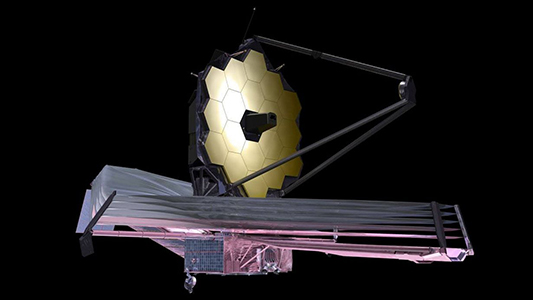Five CRAQ researchers have their applications accepted to inaugurate the “James-Webb” space telescope
 The projects of researchers at the Center for Research in Astrophysics of Quebec (CRAQ) are part of the list of 286 requests for observation time retained for the first year of operation of the telescope. The first representative of the new generation of space telescopes, capable of collecting infrared images, the James-Webb Telescope (JWST) is “the most powerful and complex space observatory to date”, according to the Canadian Space Agency. It will be launched on October 31 on board the Ariane 5 rocket.
The projects of researchers at the Center for Research in Astrophysics of Quebec (CRAQ) are part of the list of 286 requests for observation time retained for the first year of operation of the telescope. The first representative of the new generation of space telescopes, capable of collecting infrared images, the James-Webb Telescope (JWST) is “the most powerful and complex space observatory to date”, according to the Canadian Space Agency. It will be launched on October 31 on board the Ariane 5 rocket.
The projects of CRAQ researchers are as follows:
- Loïc Albert, research associate at Université de Montréal (UdeM) will scrutinize 20 “brown dwarf” stars, a class of objects halfway between giant planets, such as Jupiter, and the stars, to identify possible “companions” revolving around them.
- Olivia Lim, doctoral student in physics under the supervision of René Doyon at UdeM, will point the space telescope in the direction of the star Trappist-1, located 39 light years from Earth. With a system of planets similar in size to Earth, this target has interesting characteristics for those looking for signs of extraterrestrial life.
- Stefan Pelletier, a doctoral student in physics under the supervision of Björn Benneke at UdeM, is interested in the hot giant planets outside the solar system. The target of his project is the planet WASP-127b, a planet located 522 light years from Earth. The new observations could reveal the presence of carbon molecules in its atmosphere.
- Lisa Dang, doctoral student in physics under the supervision of Nicolas Cowan at McGill University, proposes to observe the planet K2-141b, a planet so hot that its surface is covered by an ocean of molten lava and the clouds are composed of vaporised rock.
- James Sikora, postdoctoral researcher under the supervision of Jason Rowe at Bishop’s University, will study the structure of the atmosphere and clouds of planet HD80606b in order to better understand weather phenomena on this distant world.
The CRAQ congratulates our young researchers for these exciting projects.
Source:
Robert Lamontagne
Centre de recherche en astrophysique du Québec
robert.lamontagne@umontreal.ca
